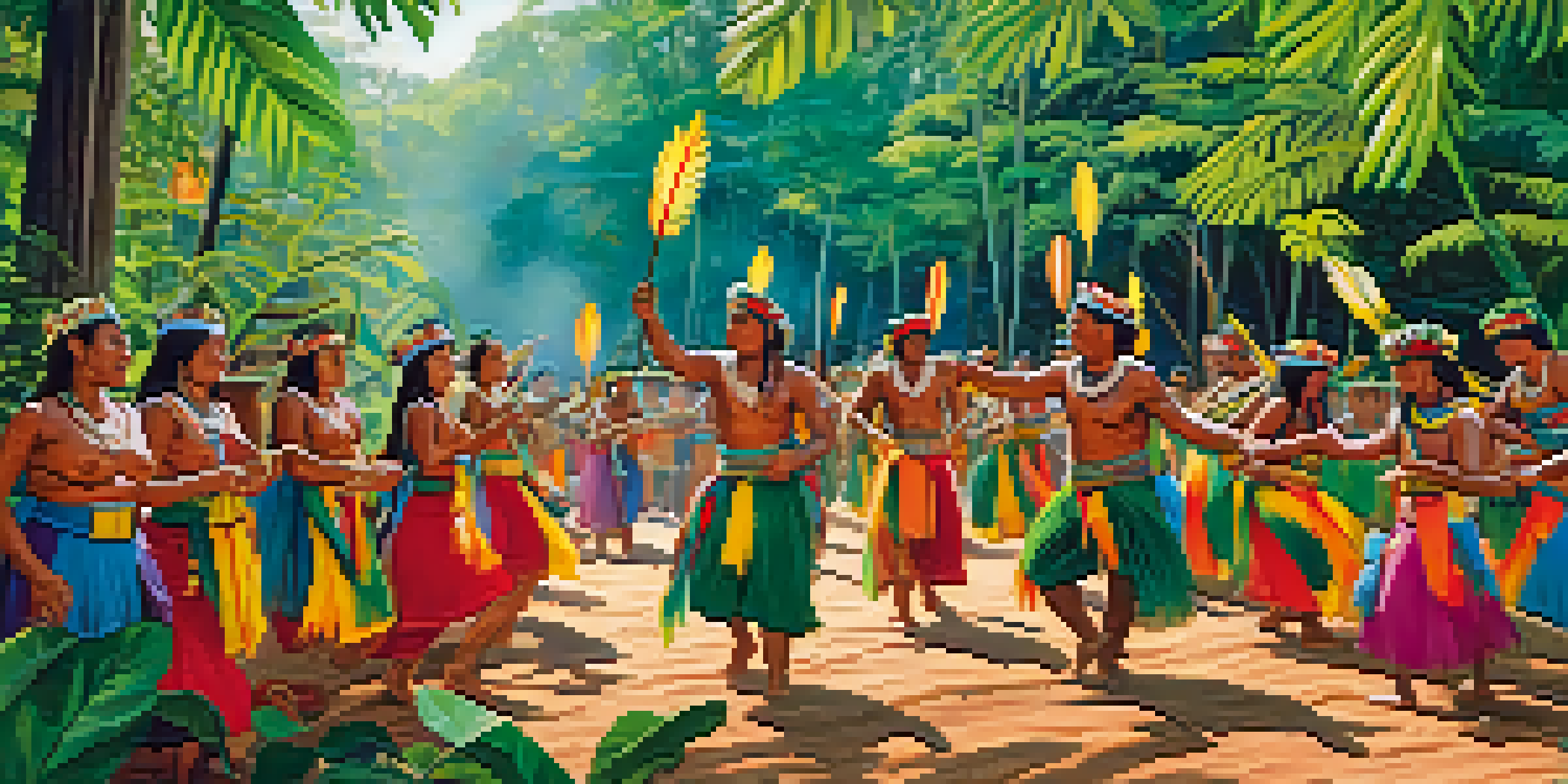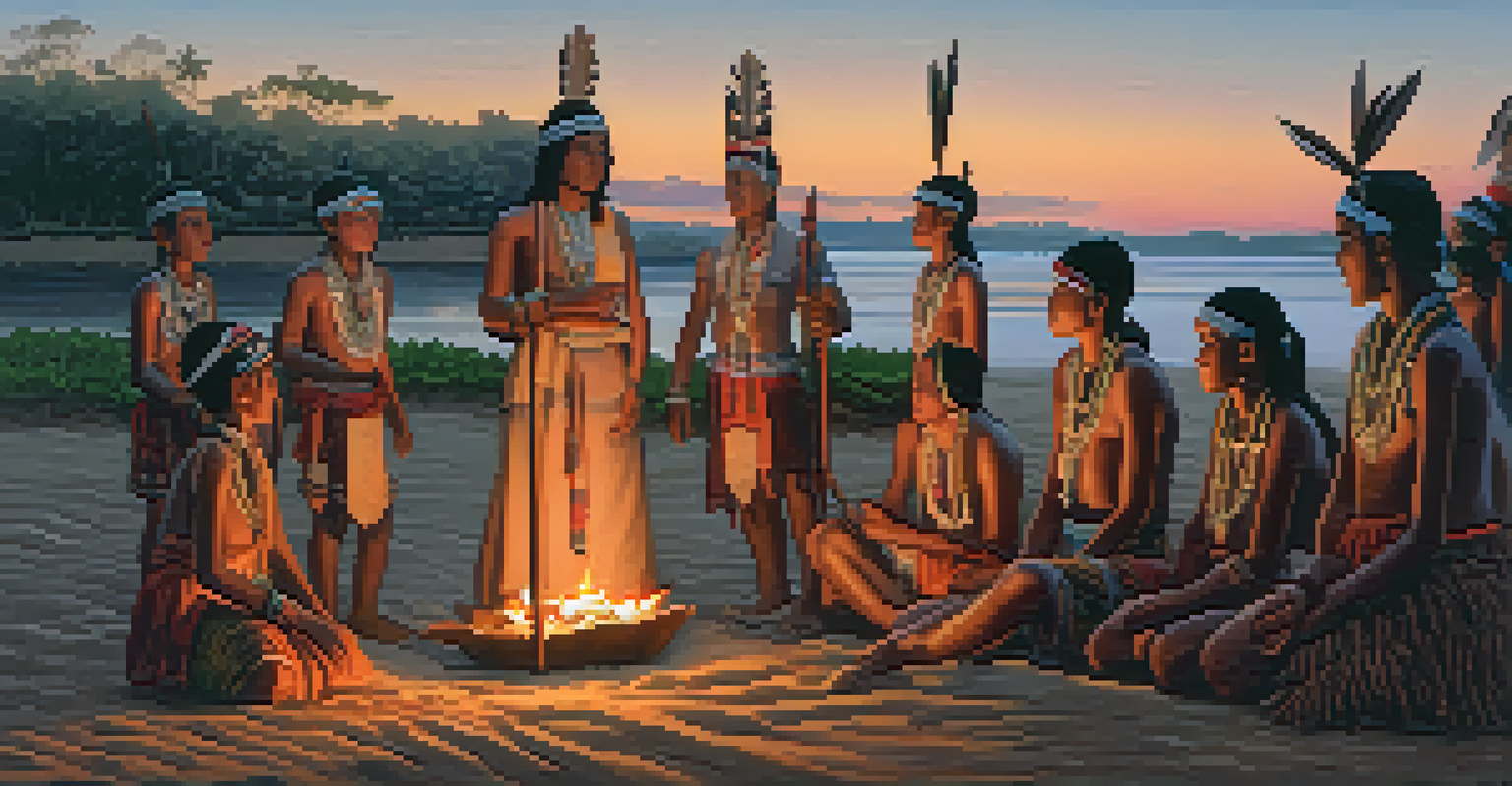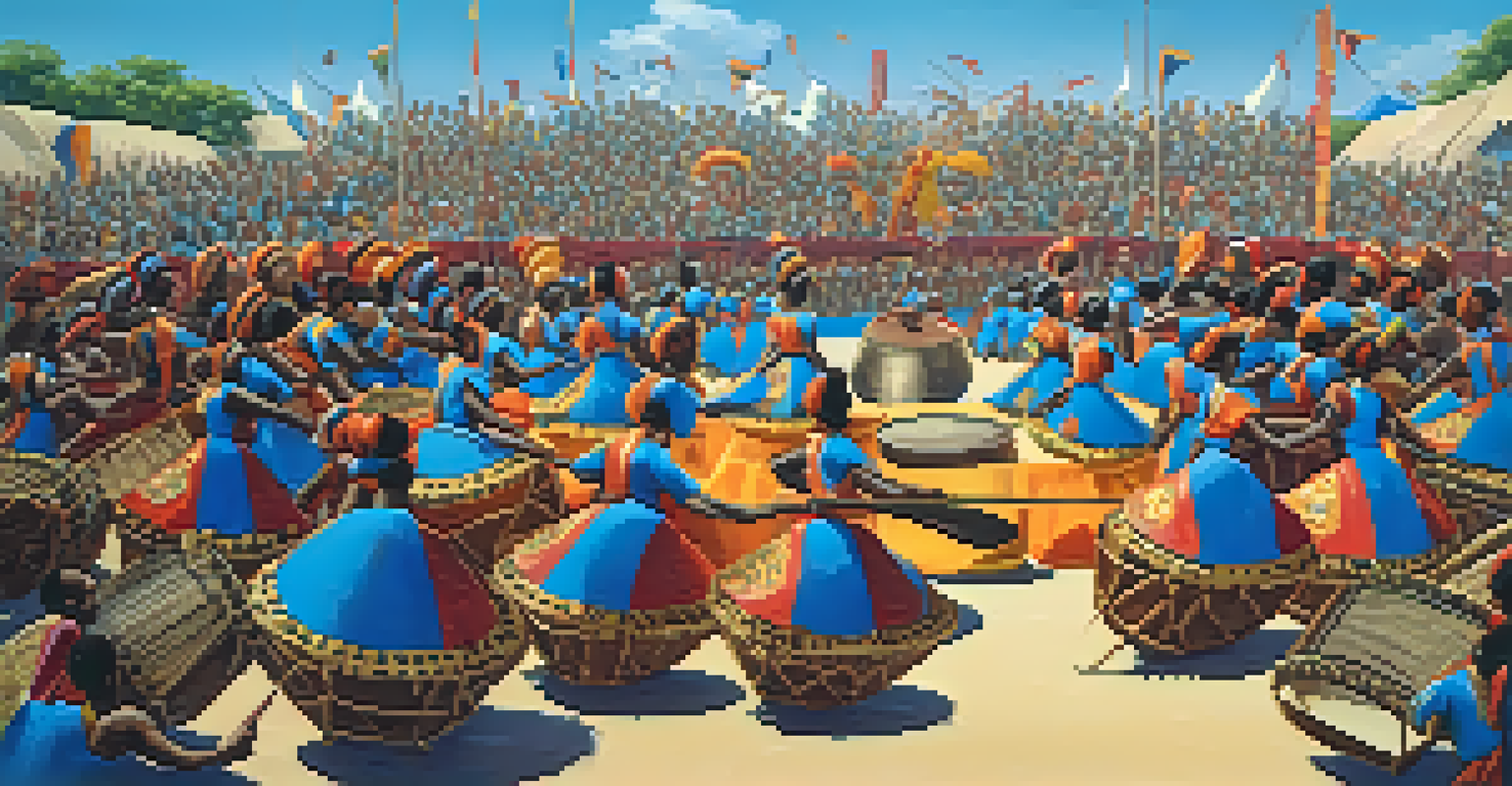Indigenous Festivals in Brazil: Celebration and Culture

Understanding Brazil's Indigenous Heritage and Festivals
Brazil is home to a diverse array of indigenous cultures, each with unique customs and traditions. These communities have rich histories that span thousands of years, deeply intertwined with the land and their spiritual beliefs. Festivals play a crucial role in preserving these traditions, allowing tribes to celebrate their identity and heritage.
Culture is the window through which we see the world, and festivals are the celebration of that view.
Indigenous festivals often showcase a blend of rituals, music, dance, and art, reflecting the values and stories of the people. Events like the Festival of the Amazonian Tribes highlight the importance of nature and community, drawing participants from various tribes. This celebration not only strengthens bonds within the communities but also fosters understanding with outsiders.
By attending these festivals, visitors gain insight into the vibrant cultures and the challenges indigenous people face today. The festivals provide a platform for sharing knowledge and raising awareness about environmental and social issues affecting their way of life. In this way, they serve as both a celebration and a call to action.
The Festival of the Amazon: A Celebration of Nature and Culture
The Festival of the Amazon, held annually in Brazil, is a vivid celebration of the rich biodiversity of the Amazon rainforest. This festival brings together various indigenous tribes, showcasing their unique customs through music, dance, and traditional cuisine. It serves as a reminder of the close relationship these communities have with the land and its resources.

During the festival, participants engage in various activities like canoe races, storytelling, and art exhibitions, all emphasizing the importance of environmental conservation. The event also features workshops where attendees can learn about traditional practices, such as sustainable fishing and medicinal plant uses. These experiences not only entertain but also educate visitors about the cultural significance of the rainforest.
Indigenous Festivals Preserve Culture
Festivals are vital for indigenous communities in Brazil, as they celebrate and preserve unique customs and traditions.
The Festival of the Amazon is more than just a celebration; it’s a powerful statement about the need to protect these vital ecosystems. By fostering a sense of community and shared purpose, the festival inspires collective action to address environmental challenges. It exemplifies how culture and nature can coexist harmoniously.
The Encontro dos Povos: Unity Through Cultural Exchange
The Encontro dos Povos, or Meeting of the Peoples, is a significant festival that promotes unity among different indigenous groups in Brazil. This event is a platform for tribes to come together, share their traditions, and advocate for their rights. It's a beautiful blend of cultural exchange that strengthens the bonds among various communities.
Tradition is not the worship of ashes, but the preservation of fire.
During the festival, participants showcase their unique dances, crafts, and stories, creating a vibrant tapestry of Brazil's indigenous heritage. Workshops and discussions are held to address pressing issues faced by these communities, such as land rights and preservation of languages. This exchange not only enriches the knowledge of attendees but also fosters solidarity among tribes.
The Encontro dos Povos represents hope and resilience, emphasizing that unity can lead to empowerment. By sharing their experiences and challenges, indigenous groups can work together to create a stronger voice in the fight for their rights. Ultimately, this festival serves as a reminder of the power of collaboration in preserving culture.
The Festival of the Kuarup: Honoring Ancestral Spirits
The Kuarup Festival is a deeply spiritual event celebrated by the Tupi and other indigenous tribes in Brazil. This festival honors the spirits of ancestors, allowing communities to pay tribute to those who have passed. The ceremony involves rituals, songs, and dances that reflect their beliefs and connection to the spiritual world.
During the Kuarup, the tribes engage in elaborate ceremonies, including the construction of wooden effigies representing deceased leaders. These effigies are adorned with traditional ornaments and are ceremoniously 'buried' to honor their memory. This practice emphasizes the ongoing relationship between the living and their ancestors, showcasing the importance of tradition in indigenous cultures.
Art Connects and Supports Communities
Art plays a crucial role in indigenous festivals, fostering cultural expression and providing economic support for artists.
The Kuarup Festival not only preserves cultural practices but also reinforces community ties. It is a time for reflection, gratitude, and storytelling, where the elders pass down wisdom to younger generations. Through this celebration, tribes ensure that their heritage remains alive and relevant.
The Jongo Festival: Rhythm and Community Celebration
The Jongo Festival is a lively celebration that highlights the cultural fusion of African and indigenous traditions in Brazil. This festival features vibrant music, dance, and storytelling, creating an atmosphere of joy and community spirit. It’s a perfect example of how diverse influences can come together to create something beautiful.
During the festival, participants engage in traditional Jongo dances, characterized by rhythmic movements and energetic beats. The music often includes drums and other percussive instruments, inviting everyone to join in the celebration. This sense of inclusivity is central to the festival, as it brings together people from various backgrounds to celebrate a shared cultural heritage.
Beyond the festivities, the Jongo Festival serves as a reminder of the resilience of marginalized communities. It reflects the strength found in cultural expression and the importance of preserving these traditions for future generations. By celebrating Jongo, participants honor their ancestors and create a sense of belonging.
The Role of Art in Indigenous Festivals
Art plays a vital role in indigenous festivals, serving as a medium for storytelling and cultural expression. From intricate body paint to beautifully crafted artifacts, art is woven into the fabric of these celebrations. Each piece often carries deep meanings, representing the tribe’s history, beliefs, and connection to nature.
During festivals, artists showcase their work, allowing attendees to appreciate the creativity and skill that goes into traditional crafts. This not only elevates the importance of art within these communities but also provides opportunities for economic support. By selling their art, indigenous artists can sustain themselves while sharing their culture with the world.
Challenges Threaten Cultural Practices
Indigenous festivals face significant challenges such as globalization and environmental issues, which threaten their cultural authenticity and survival.
Art at indigenous festivals also fosters dialogue and understanding among different cultures. It encourages visitors to engage with the stories behind each piece, bridging gaps and promoting cultural awareness. Through this shared appreciation of art, festivals create connections that transcend cultural boundaries.
Challenges Facing Indigenous Festivals Today
Despite their significance, indigenous festivals in Brazil face numerous challenges today. Issues such as land encroachment, loss of cultural identity, and climate change threaten these vibrant traditions. As modern pressures increase, many tribes struggle to maintain their cultural practices and pass them on to future generations.
Furthermore, the impact of globalization often dilutes the authenticity of these festivals, leading to commercialization that can overshadow traditional values. While tourism can provide economic benefits, it also risks transforming sacred celebrations into mere spectacles. Striking a balance between sharing culture and preserving authenticity is a challenge many communities face.

However, indigenous groups are resilient and continue to advocate for their rights and cultural preservation. Many festivals now include educational components, raising awareness about the importance of protecting these traditions. By involving younger generations and fostering community engagement, they aim to ensure that their cultural legacy endures.